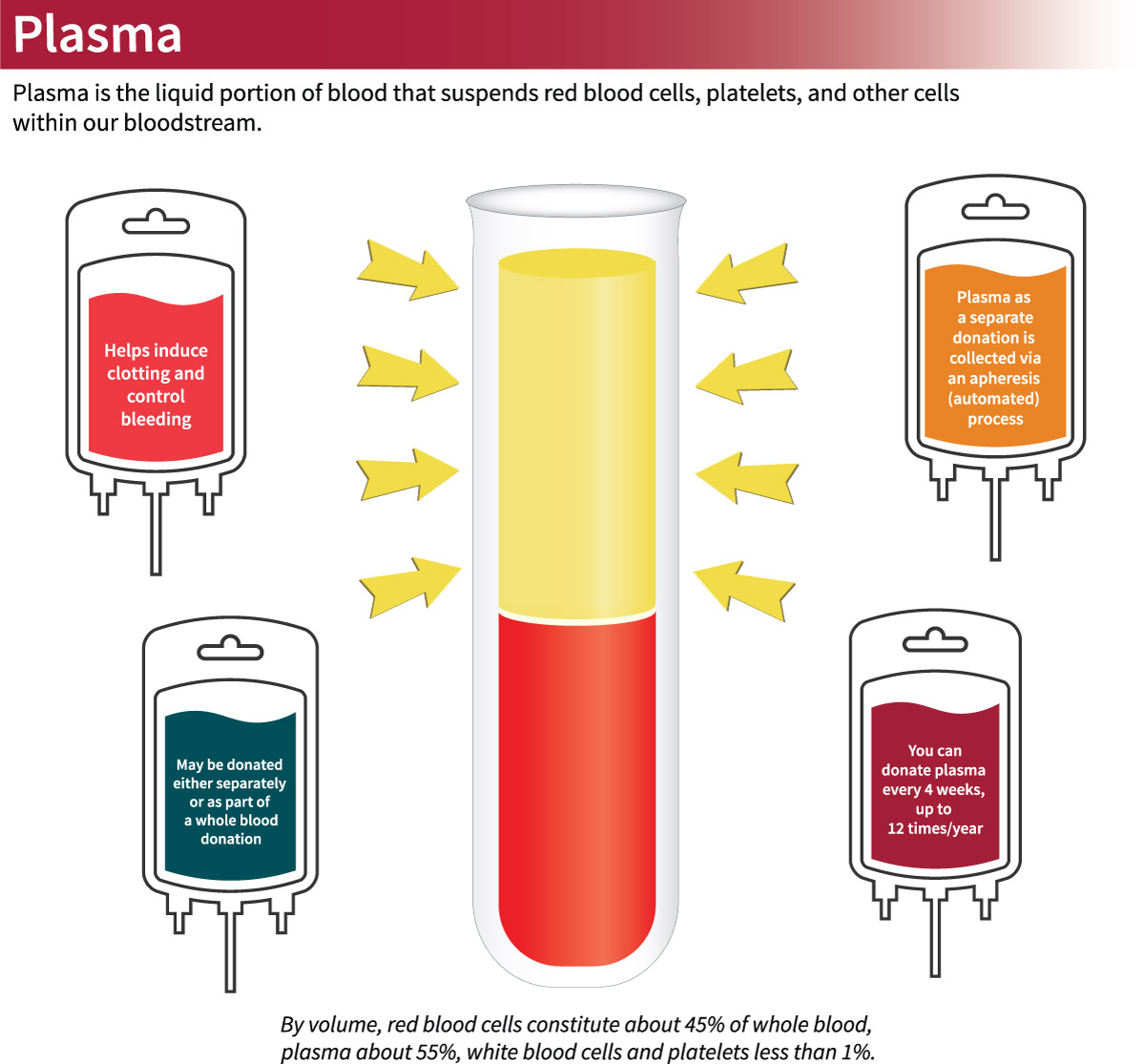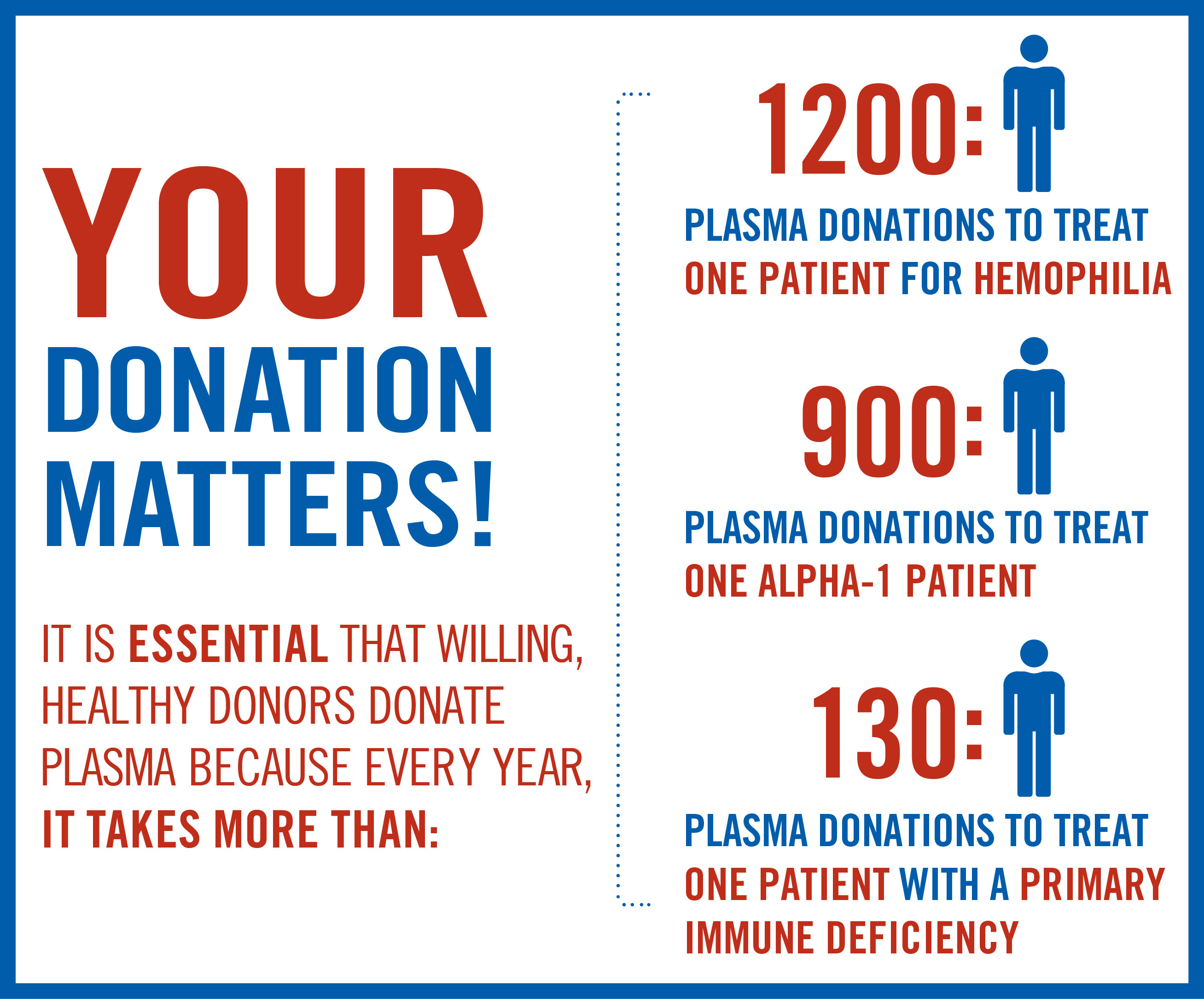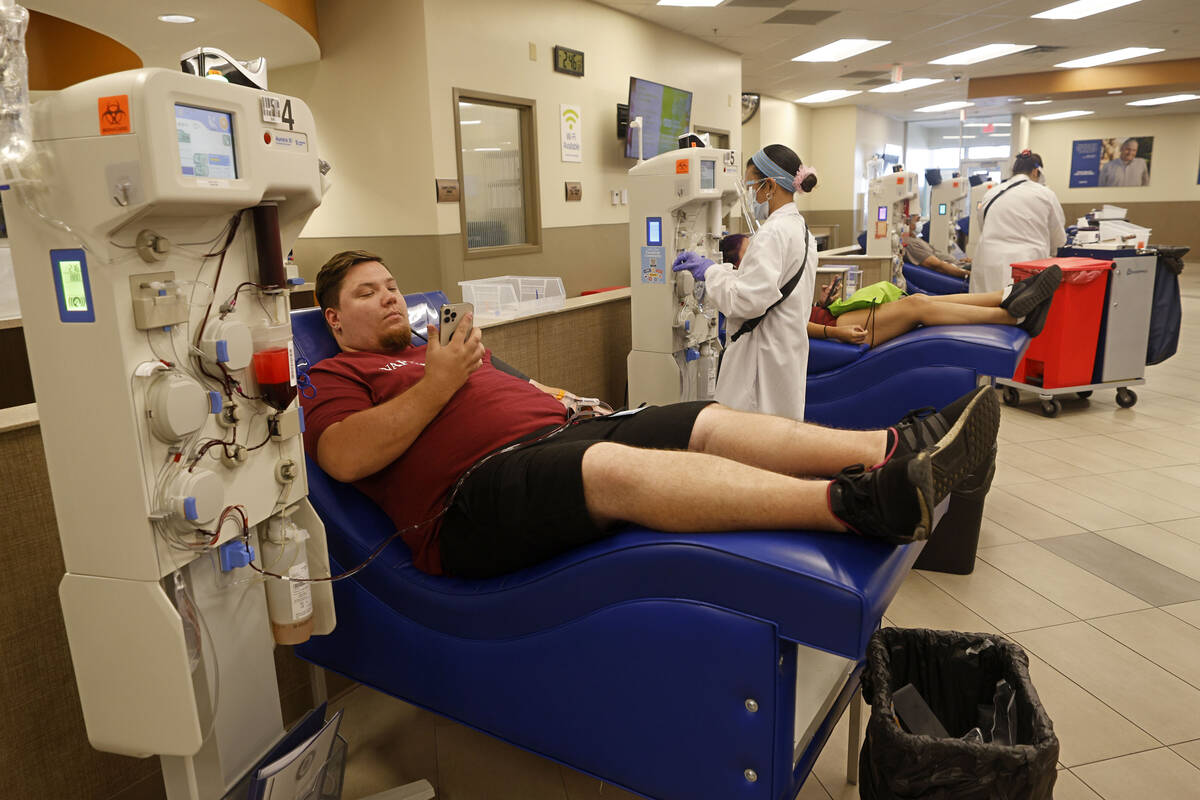What is Plasma Donation and How Does it Work?
Plasma donation is a vital process that involves collecting the liquid portion of blood, known as plasma, from a donor’s bloodstream. This plasma is rich in antibodies, clotting factors, and other essential proteins that can help treat a range of medical conditions, including hemophilia, immunodeficiency disorders, and certain types of cancer.
The plasma donation process typically begins with a thorough screening and registration process, during which potential donors are assessed for their eligibility to donate. This includes a medical examination, a review of their medical history, and a series of tests to ensure their blood is safe for donation.
Once a donor is deemed eligible, they will be seated comfortably and a sterile needle will be inserted into a vein in their arm. The plasma will be collected using a process called plasmapheresis, which separates the plasma from the other blood components. The plasma is then collected into a special container, while the remaining blood components are returned to the donor’s body.
The entire process typically takes around 1-2 hours, depending on the individual’s donation frequency and the specific requirements of the plasma donation center. Donors can usually donate plasma twice within a 7-day period, with at least 2 days in between donations.
Plasma donation is a safe and relatively painless process, with minimal risks and side effects. Donors may experience some temporary discomfort, such as bruising or swelling at the needle site, but these effects are usually mild and short-lived.
By donating plasma, individuals can play a critical role in helping to save lives and improve the health outcomes of patients in need. Moreover, plasma donors can earn a significant amount of money for their time and effort, with some centers offering payments of up to $50 or more per donation. For those wondering how much they can make from donating plasma, the answer depends on various factors, including the location, frequency of donation, and the specific plasma donation center.
The Compensation Process: How Donors Get Paid
The compensation process for plasma donors typically varies depending on the plasma donation center and the donor’s location. In general, donors can expect to receive payment for each successful donation, with the amount varying based on factors such as the donor’s weight, the frequency of donation, and the specific plasma donation center.
Most plasma donation centers pay donors on a per-donation basis, with payments ranging from $20 to $50 or more per donation. Some centers may also offer additional incentives, such as referral bonuses or loyalty programs, to encourage repeat donations.
The payment process typically involves a few steps. First, the donor will undergo a medical screening and registration process to ensure their eligibility to donate. Once the donor is deemed eligible, they will undergo the plasma donation process, which typically takes around 1-2 hours.
After the donation is complete, the donor will receive payment for their time and effort. This payment is usually made in the form of a prepaid debit card or a check, and is typically issued on the same day as the donation.
Some plasma donation centers may also offer online payment systems, allowing donors to track their earnings and receive payment more quickly. Additionally, some centers may offer mobile apps or other digital tools to help donors manage their donation schedule and payment information.
For those wondering how much they can make from donating plasma, the answer depends on various factors, including the location, frequency of donation, and the specific plasma donation center. On average, donors can earn around $200 to $400 per month, although this amount can vary significantly depending on the individual’s circumstances.
It’s worth noting that plasma donation centers are required to follow strict guidelines and regulations to ensure the safety and quality of the plasma collected. This includes adhering to strict payment and compensation policies, which are designed to ensure that donors are fairly compensated for their time and effort.
Factors Affecting Plasma Donation Pay: What You Need to Know
When it comes to determining how much a donor can earn from plasma donation, several factors come into play. Understanding these factors can help potential donors make informed decisions about their plasma donation experience.
One of the most significant factors affecting plasma donation pay is location. Plasma donation centers in urban areas tend to pay more than those in rural areas, due to the higher demand for plasma and the increased cost of living. Additionally, some states have laws that regulate the amount of money that can be paid to plasma donors, which can also impact earnings.
Another important factor is the donor’s weight. Plasma donation centers typically pay more to donors who weigh more, as they are able to collect more plasma per donation. This is because plasma is collected based on the donor’s body weight, so heavier donors are able to donate more plasma and earn more money.
The frequency of donation is also a critical factor in determining plasma donation pay. Donors who donate more frequently tend to earn more money, as they are able to collect more plasma and earn more payments. However, it’s essential to note that donors can only donate a certain number of times per week, and excessive donation can lead to fatigue and other health problems.
The type of plasma being collected can also impact earnings. Some plasma donation centers specialize in collecting specific types of plasma, such as plasma for rare blood disorders or plasma for pharmaceutical research. These types of plasma may be in higher demand and command higher prices, resulting in higher earnings for donors.
Finally, the specific plasma donation center can also affect earnings. Different centers may offer varying payment rates, bonus programs, and incentives, which can impact a donor’s overall earnings. Some centers may also offer loyalty programs or referral bonuses, which can provide additional earning opportunities for frequent donors.
By understanding these factors, potential donors can make informed decisions about their plasma donation experience and maximize their earnings. Whether you’re looking to supplement your income or simply want to help patients in need, plasma donation can be a rewarding and lucrative experience.
How Much Can You Realistically Earn from Donating Plasma?
The amount of money that can be earned from donating plasma varies widely depending on several factors, including location, weight, and frequency of donation. However, here are some general estimates of what donors can expect to earn:
On average, plasma donors can earn between $200 to $400 per month, although this amount can vary significantly depending on the individual’s circumstances. For example, donors who weigh more and donate more frequently tend to earn more money, as they are able to collect more plasma and earn more payments.
In the United States, the average pay for plasma donation is around $30 to $50 per donation, with some centers offering up to $100 or more per donation. However, these higher-paying centers are often located in urban areas and may have stricter eligibility requirements.
It’s also worth noting that some plasma donation centers offer bonus programs or loyalty rewards, which can increase earnings over time. For example, some centers may offer a bonus for every 10 donations made, or a loyalty reward for donors who reach a certain milestone.
To give readers a better idea of what to expect, here are some estimated earnings ranges for plasma donors in different locations:
* Urban areas: $300 to $600 per month * Rural areas: $200 to $400 per month * High-demand areas: $400 to $800 per month * Low-demand areas: $100 to $300 per month
Keep in mind that these are just estimates, and actual earnings can vary widely depending on individual circumstances. However, by understanding the factors that affect plasma donation pay and doing some research on local centers, donors can make informed decisions about their plasma donation experience and maximize their earnings.
Maximizing Your Earnings: Tips for Frequent Donors
For frequent plasma donors, maximizing earnings is crucial to making the most of their time and effort. Here are some tips to help donors increase their earnings:
Maintain a healthy lifestyle: Donors who are in good physical health tend to earn more money, as they are able to donate more frequently and collect more plasma. Eating a balanced diet, exercising regularly, and getting enough sleep can help donors stay healthy and maximize their earnings.
Donate regularly: Donating plasma regularly can help donors earn more money, as they are able to collect more plasma and earn more payments. Donors should aim to donate at least twice a week, and ideally every 2-3 days, to maximize their earnings.
Take advantage of bonus programs: Many plasma donation centers offer bonus programs or loyalty rewards to frequent donors. These programs can provide additional earnings opportunities, such as bonuses for every 10 donations made or loyalty rewards for donors who reach a certain milestone.
Choose high-paying centers: Donors should research and choose plasma donation centers that offer high pay rates. Some centers may offer higher pay rates for certain types of plasma or for donors who meet specific eligibility requirements.
Consider donating during peak hours: Some plasma donation centers may offer higher pay rates during peak hours, such as early morning or late evening. Donors should check with their local center to see if they offer peak hour pay rates.
Keep track of your donations: Donors should keep track of their donations, including the date, time, and amount of plasma collected. This can help donors stay organized and ensure they are earning the most money possible.
By following these tips, frequent plasma donors can maximize their earnings and make the most of their time and effort. Whether you’re looking to supplement your income or simply want to help patients in need, donating plasma can be a rewarding and lucrative experience.
Plasma Donation Centers: A Comparison of Pay Rates
When it comes to donating plasma, one of the most important factors to consider is the pay rate offered by the donation center. Different centers may offer varying pay rates, and it’s essential to research and compare these rates to ensure you’re getting the best deal.
Here’s a comparison of the pay rates offered by some well-known plasma donation centers:
* BioLife Plasma Services: $20-$40 per donation * Grifols Plasma Donation: $25-$50 per donation * CSL Plasma: $20-$40 per donation * Octapharma Plasma: $25-$50 per donation
It’s worth noting that these pay rates may vary depending on the location and the individual’s eligibility to donate. Additionally, some centers may offer bonus programs or loyalty rewards that can increase earnings over time.
Independent plasma donation centers may also offer competitive pay rates, and it’s essential to research and compare these rates to ensure you’re getting the best deal. Some independent centers may offer higher pay rates for certain types of plasma or for donors who meet specific eligibility requirements.
When comparing pay rates, it’s also essential to consider the frequency of donations and the overall earnings potential. Some centers may offer higher pay rates but have stricter eligibility requirements or fewer donation opportunities.
Ultimately, the best plasma donation center for you will depend on your individual needs and circumstances. By researching and comparing pay rates, you can make an informed decision and maximize your earnings.
Overcoming Common Challenges: Solutions for Donors
While donating plasma can be a rewarding and lucrative experience, it’s not without its challenges. Here are some common challenges faced by plasma donors and some practical solutions to help overcome them:
Fatigue: Donating plasma can be physically demanding, and some donors may experience fatigue after donation. To combat this, donors can try to get plenty of rest before and after donation, eat a healthy diet, and stay hydrated.
Dehydration: Dehydration is a common side effect of plasma donation, and it’s essential to drink plenty of water before, during, and after donation. Donors can also try to avoid caffeine and sugary drinks, which can exacerbate dehydration.
Scheduling conflicts: Donors may experience scheduling conflicts, especially if they have a busy schedule. To overcome this, donors can try to plan their donations in advance, using online scheduling tools or mobile apps to book appointments.
Medical issues: Some donors may experience medical issues, such as bruising or swelling, after donation. To minimize the risk of medical issues, donors can try to follow the donation center’s guidelines for preparation and aftercare.
Emotional stress: Donating plasma can be emotionally stressful, especially for first-time donors. To overcome this, donors can try to relax and focus on the positive aspects of donation, such as the opportunity to help patients in need.
By being aware of these common challenges and taking steps to overcome them, donors can have a more positive and rewarding experience. Remember, donating plasma is a valuable contribution to the medical community, and with the right mindset and preparation, donors can overcome any challenges that come their way.
Conclusion: Is Donating Plasma Worth It for the Money?
Donating plasma can be a worthwhile way to earn money, especially for those who are eligible to donate and can commit to regular donations. While the pay rates may vary depending on the location and the individual’s eligibility, the average earnings potential for plasma donors can range from $200 to $400 per month.
However, it’s essential to consider the potential challenges and risks associated with plasma donation, such as fatigue, dehydration, and medical issues. Donors should also be aware of the various factors that can impact their earnings, such as location, weight, and frequency of donation.
By understanding the compensation process, factors affecting pay, and common challenges, donors can make informed decisions about their plasma donation experience. Additionally, by following tips for maximizing earnings and overcoming common challenges, donors can optimize their financial potential.
Ultimately, whether donating plasma is worth it for the money depends on individual circumstances and priorities. For those who are eligible and willing to commit to regular donations, plasma donation can be a valuable way to earn money while contributing to the medical community.
In conclusion, donating plasma can be a worthwhile way to earn money, but it’s essential to be aware of the potential challenges and risks. By understanding the compensation process, factors affecting pay, and common challenges, donors can make informed decisions and optimize their financial potential.







